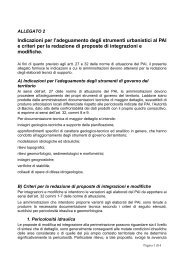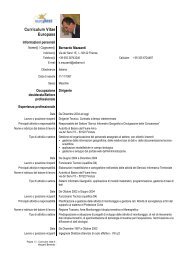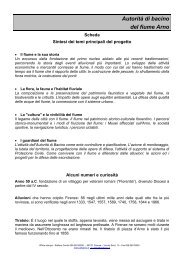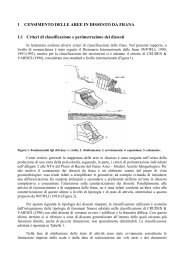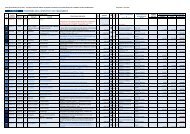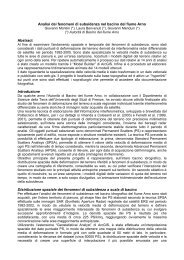11. Confidence Intervals for Flood Return Level Estimates assuming ...
11. Confidence Intervals for Flood Return Level Estimates assuming ...
11. Confidence Intervals for Flood Return Level Estimates assuming ...
Create successful ePaper yourself
Turn your PDF publications into a flip-book with our unique Google optimized e-Paper software.
214 11 <strong>Flood</strong> <strong>Level</strong> <strong>Confidence</strong> <strong>Intervals</strong>precipitation to increase [<strong>11.</strong>32] with increasing global mean temperature. Thisimplies changes in precipitation patterns, a major factor – among some others– <strong>for</strong> the intensity and frequency of floods, which ultimately can cause tremendousconsequences <strong>for</strong> nature and societies in a catchment area. This has beenalready observed in many regions of the world [<strong>11.</strong>37].A pressing question is thus whether heavy rain or severe floods becomemore frequent or intense. Some concepts make use of non-stationary models,e.g., Chapter 5, [<strong>11.</strong>16, <strong>11.</strong>33], or try to identify flood producing circulationpatterns [<strong>11.</strong>2]. A variety of approaches assess changes by comparing windowscovering different time spans [<strong>11.</strong>3]. This procedure is especially useful <strong>for</strong>getting an impression of possible further developments by comparing GCMcontrol and scenario runs [<strong>11.</strong>38,<strong>11.</strong>57]. A useful indicator <strong>for</strong> changes in floodfrequency and magnitude is the comparison of return level estimates. For thispurpose a reliable quantification of the uncertainty of return level estimates iscrucial.Alerted by an seemingly increasing flood risk, decision makers demand <strong>for</strong>quantitative and explicit findings <strong>for</strong> readjusting risk assessment and managementstrategies. Regional vulnerability assessments can be one strategy to dealwith the threat of extremes, such as floods or heat waves (e.g., [<strong>11.</strong>36]). Otherapproaches try to anticipate extreme scenarios by the help of GCM model runs.The development of risk assessment concepts, however, has still a long way togo, since <strong>for</strong>ecasting of extreme precipitation or floods is highly uncertain (cf.<strong>for</strong> instance [<strong>11.</strong>42]). Another potential problem in the risk assessment frameworkis the quantification of uncertainty in extreme value statistics. In situationswhere common statistical approaches might not be applicable as usual,e.g., dependent records, specification of uncertainty bounds <strong>for</strong> a return levelestimate cannot be made on the basis of the mathematically founded asymptotictheory. The simplified assumption of independent observations usuallyimplies an underestimation of this uncertainty [<strong>11.</strong>4,<strong>11.</strong>13,<strong>11.</strong>35]. The estimationof return levels and their uncertainty plays an important role in hydrologicalengineering and decision making. It <strong>for</strong>ms the basis of setting design values<strong>for</strong> flood protection buildings like dikes. Since those constructions protect facilitiesof substantial value or are by themselves costly objects, it is certainlyof considerable importance to have appropriate concepts of estimation anduncertainty assessment at hand. Otherwise severe damages, misallocation ofpublic funds, or large claims against insurance companies might be possible.Thus, the approach presented in this contribution focuses on an improvementof common statistical methods used <strong>for</strong> the estimation of return levels withnon-asymptotic bootstrap method.In the present article, we focus on the block maxima approach and investigatethe maximum-likelihood estimator <strong>for</strong> return levels of autocorrelatedrun-off records and its uncertainty. In a simulation study, the increase in uncertaintyof a return level estimate due to dependence is illustrated. As a result of



